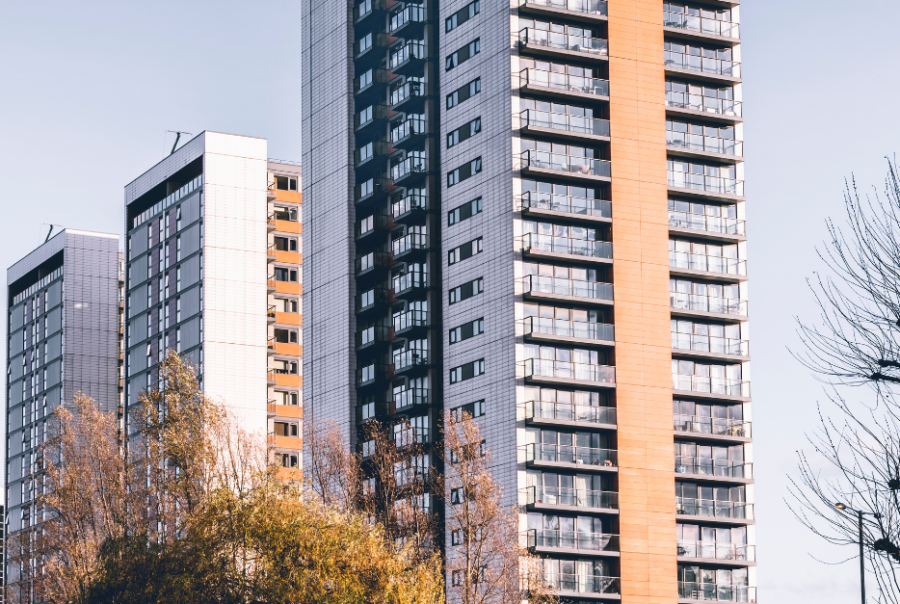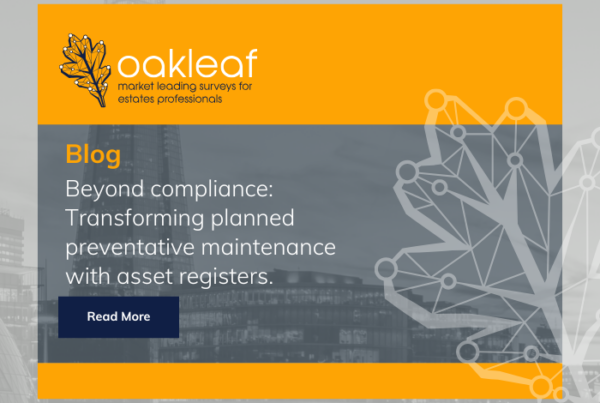Over the last couple of years, updated guidance and new legislation has been published to provide a more comprehensive and proactive approach to assessing the fire safety of multi-occupancy buildings, especially the external walls.
As can often be the case with new guidance, understanding what process needs to be followed to comply can be confusing. Plus, it’s made even more challenging by some of the language and terminology used, which is often misinterpreted. Let’s break it down…
So, what’s new?
In 2022 a Fire Risk Appraisal of External Walls (FRAEW) was launched to provide more proportional risk assessments of external wall systems.
A new guidance document was also created and intended to help inform those making the assessments – PAS9980:2022. The PAS stands for ‘Publicly Available Specification’. It provides a framework approach to how these assessments should be carried out, the watchwords being ‘holistic’ and ‘proportional’.
Is a FRAEW report required?
Possibly. And this is often where some of the confusion lies.
It’s YES to a Fire Risk Assessment (FRA). This is a legal requirement. And a MAYBE to a FRAEW. A FRAEW doesn’t replace a FRA report.
Under the Fire Safety Order 2005, a FRA is a fundamental legal requirement for multi-occupied residential buildings. As a result of the Fire Safety Act 2021 a FRA now includes an assessment of the external walls.
A Fire Risk Assessor will carry out the FRA and if they feel the uncertainty of the external wall systems warrants an escalation, then they will recommend a FRAEW be carried out. So, whether the building needs a FRAEW report or not is based on the recommendations in a building’s FRA.
If needed, the FRAEW would then be undertaken by a qualified and competent fire engineer. The engineer would have to have the required high level of Professional Indemnity insurance to allow them to undertake this level of work.
It’s important you engage with competent Fire Risk Assessors at the outset, who are experienced and confident in skills, knowledge and experience to make sensible decisions and recommendations as to whether a FRAEW is needed or not.
What’s the difference between EWS1 and FRAEW?
Again, a lot of confusion here. They are two different things, which both serve a different purpose.
An EWS1 – an External Wall System fire review certificate – is for the purpose of valuation to determine and grade the risk for mortgage lending. Whereas a FRAEW report is designed to assess the risk of fire spread and impact on the life risk of the building, considering the make-up and construction of any external wall system, while considering the collective risks and mitigations in place for the building as a whole.
So, you could view the EWS1 as a financial risk assessment focused on the asset and the FRAEW as a life risk assessment focused on the occupants.
If a FRAEW is needed, consider reviewing your EWS1 at the same time. Why? These documents have a five-year shelf life, and some may only have a year or so left to run. So, it’s best to ensure this is valid and represents the correct and current assessment of the external walls system grading to satisfy mortgage lending purposes, otherwise you’ll have a lot of unhappy leaseholders if this is incorrect or lapses.

How does the FRAEW process work?
The FRAEW process is broken down into two distinct phases:
Step 1: This involves a visual appraisal of the building, to assess the make-up of the external wall system. Consideration will be given to the original age of construction, Building Regulations at the time and any supporting structural reports the client may have to validate the construction methods and materials.
The experienced fire engineer will then apply the rationale approach from PAS9980 to determine if there is minimal discernible risk, in which case the Step 1 report is as far as this phase goes. The client will get an indemnified report to confirm that no further investigation is required. This report can also be used to validate Safety Case report arguments for High Rise Buildings (HRBs).
Step 2 to 5: If the review highlights areas of concern it will recommend a progression to a full intrusive FRAEW assessment.
This will require some coordination with the client to plan a programme of works, with communication to residents, to arrange contractors to come and ‘open up’ points on the exterior of the building where samples can be taken to understand the external wall make-up.
Our engineers also use borescopes to determine if the critical cavity barriers are located in the right place and are positioned correctly.
All the reports include a full description and photographs which reveal what’s happening beneath the façade of the building.
These are critical reports for substantiating the Safety Case if you have HRBs.
How to find an approved provider
It’s important that you engage with competent Fire Risk Assessors who are experienced and have the skills, knowledge and expertise to make sensible decisions when carrying out the FRA and FRAEW.
Preferably choose a FRA and a FRAEW provider who is on the Government’s Homes England approved list, in case you need to access the Cladding Safety Scheme for funding, (applicable to residential buildings over 11m – 11m-18m in London). Only FRAEWs completed by a provider on this pre-vetted list will be acceptable to access the funding.
How we can help you
We are a Homes England approved provider.
We take a pragmatic view of FRA and FRAEW and will work with you to understand your buildings and your needs.
Our fire engineers can assist you through all stages of the FRAEW delivery. We can also produce EWS1 reports, alongside the FRAEW report, signed off by a chartered engineer. We also provide a handover explanation of the report findings, so you understand what action to take next.
Our inhouse team of Building Safety Case specialists also work closely with our engineers to stitch these report findings into Safety Cases that we can develop for you, if you have a portfolio of HRBs.
If you’d like to speak to us directly about your building’s fire safety, send us a message.




 Find us on LinkedIn
Find us on LinkedIn